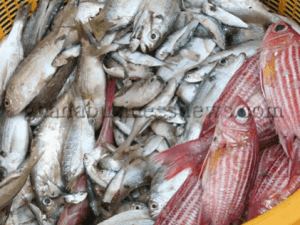Poor extension services said to hinder aquaculture in Ashanti
 Poor extension services have become a huge drawback on efforts at developing the enormous aquaculture potentials in the Ashanti Region.
Poor extension services have become a huge drawback on efforts at developing the enormous aquaculture potentials in the Ashanti Region.
Mr Francis Akorlor, the Regional Fisheries Director, confirmed this to the Ghana News Agency (GNA) in Kumasi and acknowledged that the outcomes of exploitation of fisheries resources – actual number of fishermen, landing, gear in use and processing methods among other activities also remained largely unrecorded because of inadequate field staff.
Other challenges include high cost of pond construction, unaffordable feed prices, shoddy construction of ponds and eroded dykes.
Mr Akorlor said the region’s excellent conditions for fisheries development was not in doubt and cited its clayey land with high water retention capacity and perennial rivers and streams including the Afram arm of the Lake Volta as reliable sources of water supply.
Added to these are good water conditions, temperature, dissolve oxygen level and low turbidity alongside high interest by individuals to invest in fish culture ventures.
The Regional Director mentioned Sekyere Afram Plains, Sekyere Central, Amansie West and Amansie Central as four districts gifted with tremendous fish farming resources.
The two Sekyere districts have an estimated combined water surface area of 6.3 square kilometres, while Amansie have four large mine pools with an approximated water surface area of 70 hectares.
Mr Akorlor said they were now carrying out studies to establish the suitability for cage culture practice in those districts and that, if confirmed, about 50,000 to 100,000 metric tonnes of fish could be produced annually.
Currently, the annual production of fish in the region is about 564.11 metric tonnes.
Source: GNA
